English | Dutch |
|
| Birding in Zapata | |
Havana (Cuba), February 8th 2015
|
|
| |
|
Cuba is a great country to travel in. Crumbling cities, old American cars, an interesting recent history and the typical Cuban way of life, makes this a great country. However, the landscape is unfortunately not so spectacular. When Cuba was discovered in 1492 by Columbus, approximately 95% of the island was covered with rainforest. By the time Fidel Castro and his revolutionaries came to power in 1959, only 16% was left. This huge decrease of rainforest was the result of unregulated land-clearing for sugarcane and citrus plantations. Now, fifty years later, the percentage has increased again to 24% thanks to reforestation and preservation projects. Despite the fact that vast areas of forest are cut, Cuba is still a very interesting country for birdwatchers. It has 370 different species of feathered friends, of which 28 are endemic to Cuba, at least that’s what a national park official told us. For some of them, the future is not so bright. Their existence is seriously threatened and for example the Ivory-billed Woodpecker, is probably already extinct. We are no fanatic birdwatchers, but we are serious enough to have a pair of binoculars and a field guide with us. We do not have a detailed opinion about the best places in Cuba to see the birds, but what we do know is that we found Ciénage de Zapata (the Zapata swamp) an interesting place to do birding. Of the 89 different species we saw in Cuba, we saw 81 of them (also) in the Zapata region. |
|
 |
|
The smallest bird of our planet (Bee Hummingbird) in action |
|
The best place to base yourself for the Zapata area is probably the small (beach) village Playa Larga. Playa Larga is located on the shores of the Bay of Pigs, which played also an important role in recent Cuban history. This was one of the place in 1961, that the Americans had chosen to initiate an attempt to spark a counter-revolution to overthrow the fresh regime of Fidel Castro. The Americans planned and paid the attempt, but did not fight themselves. They used Cuban mercenaries to do the job, but the attempt failed dramatically. In Playa Larga are many so-called Casa Particulars, private houses with rooms for rent. In Cuba it is not allowed to visit a national park on your own. You must be accompanied with a local guide. It will cost you some pesos, but on the other hand can a guide be handy to show you the best places and identify the birds for you. There are three type of areas to visit in the Zapata region; the forest, the lagoon, and the swamps. In these three different kinds of habitat, you will find three different kinds of birds. We spent three full days in the area and used a guide on two of the mornings to visit the forest (area around the village called Soplillar) and the lagoon (the dirt track to Las Salinas). We did not visit the swamp area. The forest around Soplillar is not part of the national park, so officially you do not have to pay to go to this area. But that is probably not what they will tell you at the national park office in Playa Larga where you can arrange your guide. They will try to charge you also for a visit to this forest. The entrance fee for the national park is 10 CUC (Cuban Convertible Peso) per person, which is 10 US$. This fee includes the services of the mandatory guide. However, this is probably also something they won’t tell you. They told us that the 10 CUC per person is only the entrance fee for the park and that it does not include the guide. For this, they will try to charge you another 10 CUC. When you are at the national park office to plan your trip, try to make a clear agreement about the costs involved. | |
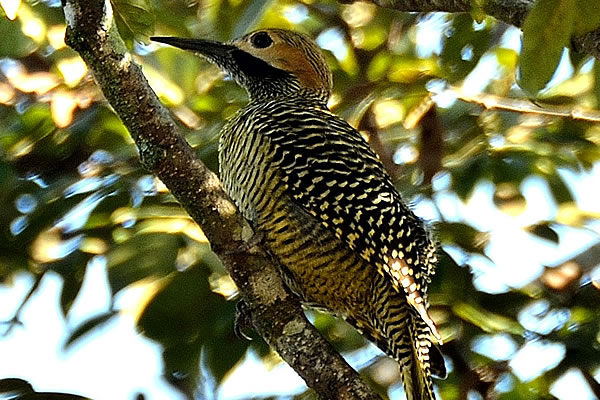 |
|
The rare Fernandina's Flicker is still relatively easy to see in Zapata |
|
The third day of our visit to the Zapata area, we did a walk on our own, without the use of a guide. We did a walk of 18 kilometres; from Playa Larga over the main road to Palpite, and from there over a dirt track to Soplillar. From Soplillar we walked south to the coast again, and from there back to Playa Larga. The hike took us almost seven hours (including birding), and we saw 39 species that day. And to be clear, this hike does not take you through the national park, so you can do it on your own without the use of a guide. And, as said before, we found the Zapata region a great place to do birding and some of the more interesting birds we saw were: Cuban Pigmy Owl, Cuban Emerald, Cuban Trogon (national bird of Cuba), Bee Hummingbird (smallest bird in the world), Cuban Tody, Cuban Green Woodpecker, Fernandina’s Flicker, and the Red-legged Honeycreeper. |
|
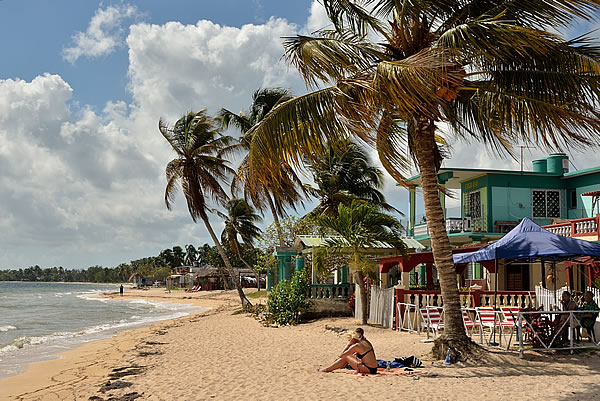 |
|
The other reason to come to Zapata: the beaches of Playa Larga |
|
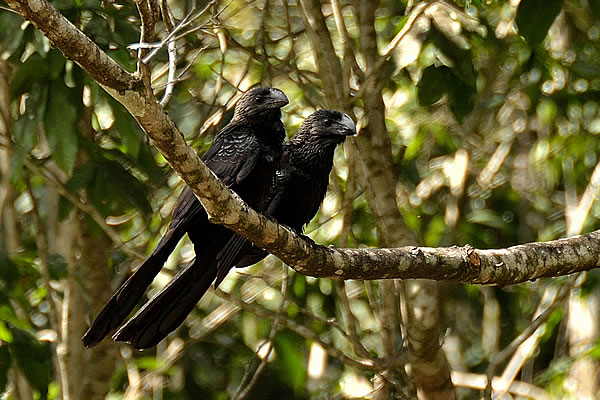 |
|
Two Smooth-billes Anis |
|
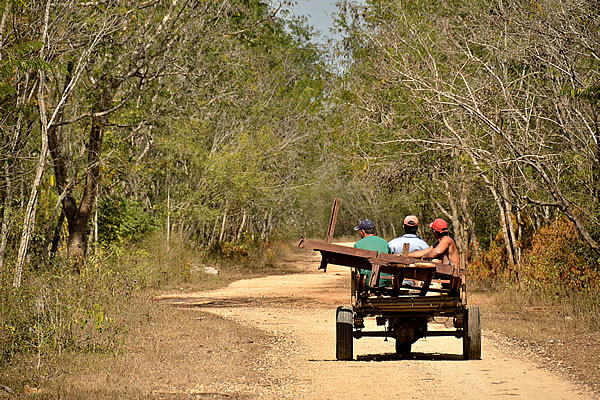 |
|
The landscape between Palpite and Soplillar |
|
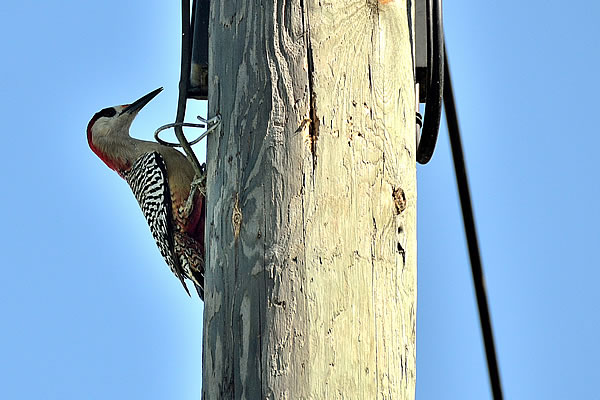 |
|
A West Indian Woodpecker on an electricity pole |
|
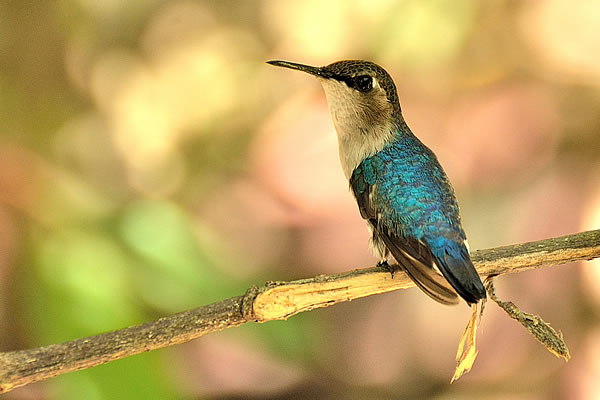 |
|
The size of this tiny Bee Hummingbird is only 5 cm |
|